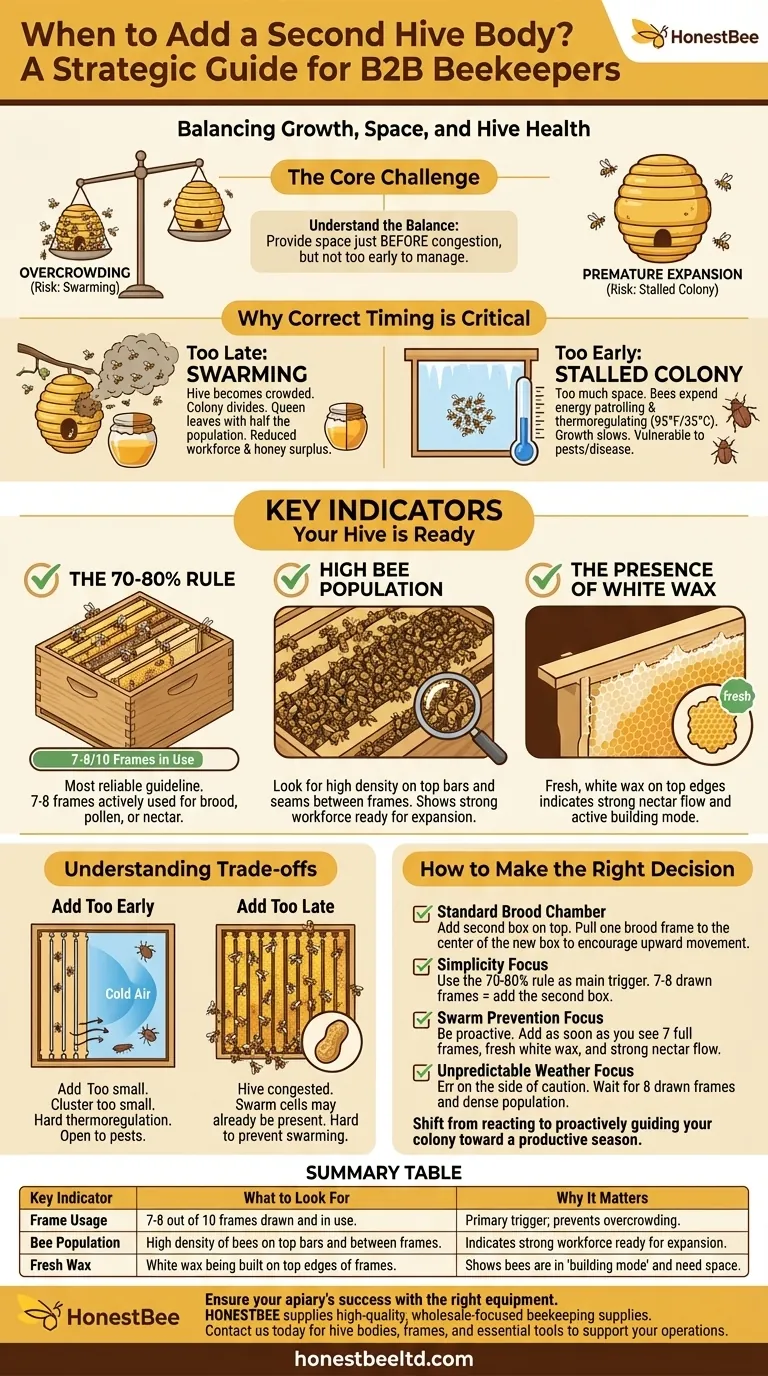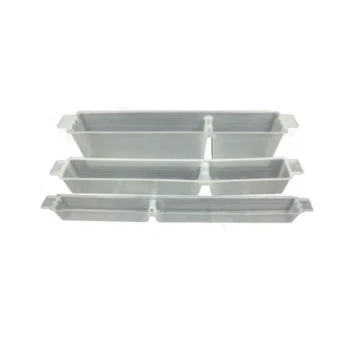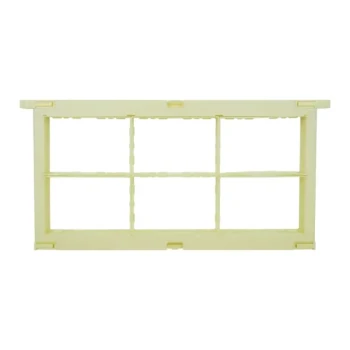Knowing when to add a second hive body is a critical step in managing a growing honey bee colony. The most reliable indicator is space utilization: once the bees have drawn out and are actively using 7 to 8 of the 10 frames in their first box, it is time to add the second. This prevents the colony from becoming "honey bound" or feeling crowded, which is a primary trigger for swarming.
The core challenge is not just following a rule, but understanding the balance. You must provide more space just before the colony feels congested, but not so early that they cannot manage and defend the new territory.

Why Correct Hive Expansion Timing is Critical
Adding a second hive body, a process called "supering," is a response to a colony's natural desire to expand. Timing this incorrectly in either direction has significant consequences for the health and productivity of your hive.
The Risk of Acting Too Late: Swarming
A honey bee colony's primary reproductive impulse is to swarm. When the hive becomes too crowded, the bees will begin preparations to divide.
They raise new queen cells, and just before they hatch, the old queen will leave with roughly half the colony's population. This event cuts your workforce in half, drastically reducing any potential honey surplus for the season.
The Risk of Acting Too Early: A Stalled Colony
Giving bees too much space before they are ready can be just as detrimental, especially for a new or developing colony.
An oversized cavity forces the bees to expend immense energy patrolling for pests and, more importantly, maintaining the critical temperature of the brood nest (around 95°F or 35°C). This diverts resources away from raising new bees and drawing new comb, effectively slowing the colony's growth.
Key Indicators Your Hive is Ready for More Space
Instead of relying on a single metric, a trusted advisor assesses multiple signs to make an informed decision. Look for a combination of the following indicators.
The 70-80% Rule
This is your most straightforward guideline. During a hive inspection, look at the frames in the top hive body.
If the bees have built out the wax comb and are actively using 7 or 8 of the 10 frames for brood, pollen, or nectar, they are running out of room. This is the clearest sign that they are ready for expansion.
High Bee Population
Visual cues can tell you a lot before you even open the hive. A colony that is ready to expand will look very busy.
You will see a large number of bees on the top bars when you first crack the lid. The "seams" between the frames will be filled with bees. This high population density means they have the workforce necessary to occupy, build, and defend a new box.
The Presence of White Wax
Look for fresh, white wax being built along the top edges of the frames. This is a key sign that the bees have a strong nectar flow and their wax glands are fully active.
This "whitening" of the comb indicates the bees are in "building mode" and are looking for new space to construct.
Understanding the Trade-offs
Every management decision involves balancing risks. Supering is no different.
What Happens If I Add a Box Too Early?
If you add a box when only 3-4 frames are drawn, the cluster of bees may not be large enough to expand into it.
The bees will have to work harder to thermoregulate the vast, empty space above them. In a sudden cold snap, this can chill the brood, making it susceptible to disease. The undefended frames also create an open invitation for pests like wax moths or small hive beetles.
What Happens If I Add a Box Too Late?
If you wait until all 10 frames are full and the bees are bearding heavily on the front of the hive, you may already be behind.
By this point, the colony likely feels congested. A quick inspection of the lower edges of the brood frames may reveal swarm cells—peanut-shaped queen cells that signal the colony's imminent departure. Once swarm cells are capped, it is very difficult to prevent the swarm.
How to Make the Right Decision
Ultimately, your goal is to anticipate the colony's needs. Adding a second box is about providing a path for growth before the bees feel restricted.
- If you are managing a standard brood chamber: Add the second hive body directly on top of the first. To encourage the bees to move up, you can pull one frame of brood from the center of the bottom box and place it in the center of the new top box, ensuring the frames around it are empty.
- If your primary focus is simplicity: Use the 70-80% rule as your main trigger. When 7-8 frames in the first box are drawn out and in use, add the second.
- If your primary focus is swarm prevention: Be proactive. Add the second box as soon as you see 7 full frames combined with fresh white wax and a strong nectar flow.
- If you are in an area with unpredictable weather: Err on the side of caution. Wait until 8 frames are fully drawn and the bee population is visibly dense to ensure they can keep the larger space warm.
By learning to read these simple signs, you shift from reacting to hive events to proactively guiding your colony toward a productive season.
Summary Table:
| Key Indicator | What to Look For | Why It Matters |
|---|---|---|
| Frame Usage | 7-8 out of 10 frames drawn and in use. | The primary trigger; prevents overcrowding. |
| Bee Population | High density of bees on top bars and between frames. | Indicates a strong workforce ready for expansion. |
| Fresh Wax | White wax being built on top edges of frames. | Shows bees are in 'building mode' and need space. |
Ensure your apiary's success with the right equipment.
Managing hive expansion is just one part of successful beekeeping. Having durable, well-designed equipment is fundamental. HONESTBEE supplies commercial apiaries and beekeeping equipment distributors with high-quality, wholesale-focused beekeeping supplies.
From hive bodies and frames to essential tools, our products are built to support the health of your colonies and the productivity of your operation.
Contact HONESTBEE today to discuss your wholesale supply needs and let us help your business thrive.
Visual Guide

Related Products
- Langstroth Honey Bee Box Hive Boxes for Different Depths
- HONESTBEE Professional Long Handled Hive Tool with Precision Cutting Blade
- Australian Langstroth Beehive Boxes for Beekeeping Wholesales
- Portable Bee Mating Hive Boxes Mini Mating Nucs 8 Frames for Queen Rearing
- In-Hive Dual Compartment Frame Bee Feeder for Targeted Colony Nutrition
People Also Ask
- How does a hive box work? A Guide to the Langstroth Hive System for Beekeepers
- What are the sizes of supers available in a standard hive? A Guide to Deep, Medium, and Shallow Boxes
- How should hive boxes be aligned after reassembly? Ensure a Perfect Seal for Hive Health
- Why do you need two bee hives? Boost Your Apiary's Success with Smart Risk Management
- What factors should beekeepers consider when choosing between wooden and polystyrene hives? Maximize Bee Health and Honey Production



















